Extreme living: homes at the end of the Earth
Wilderness homes far from civilisation
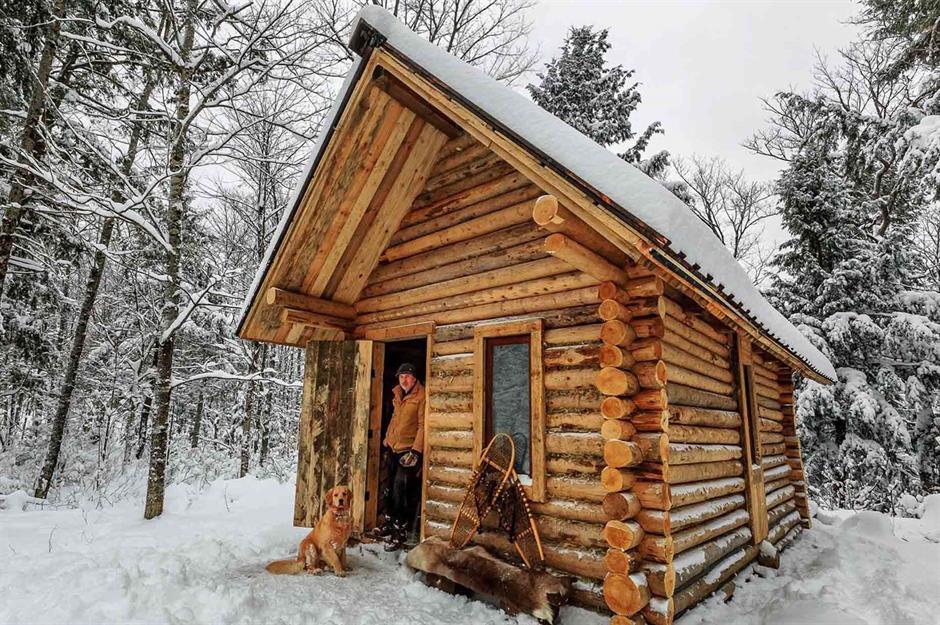
Sometimes the frantic pace of modern life can make you want to retreat far away from civilisation, with nothing but a warm fire and Mother Nature for company.
From a handmade yurt nestled deep in the Canadian wilderness to a solitary house teetering on a towering stone pillar, these extreme dwellings make do with only the bare necessities.
Click or scroll on to meet the fascinating people who call the world's most remote locations home...
Gridlessness family home, British Columbia, Canada
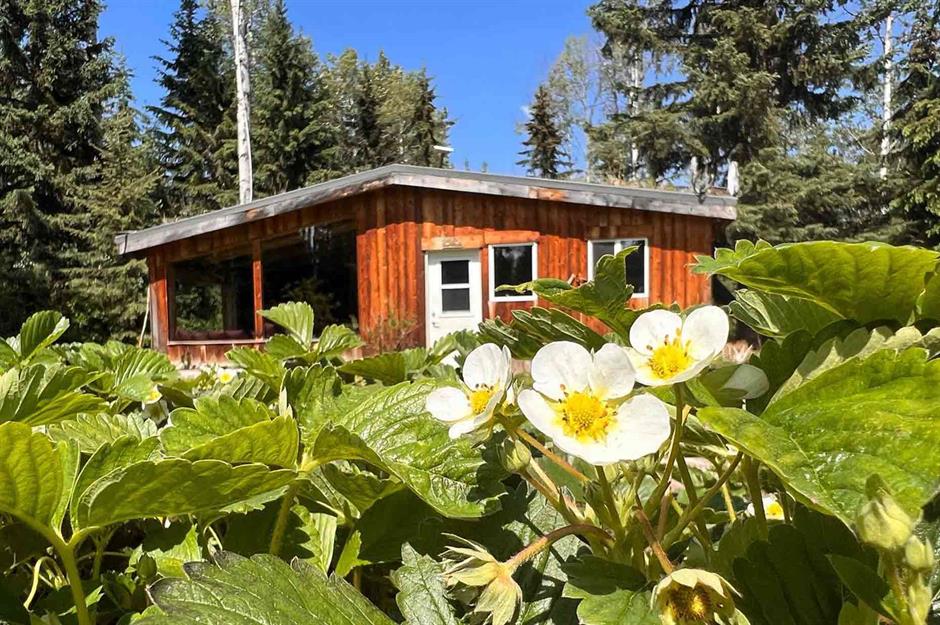
Nestled in the north of British Columbia, Jeff and Rose live in this idyllic country home with their five daughters. Determined to forge a debt-free, nature-filled life for their family, they built the wooden house themselves for just $25,000 (£20k).
The family documents their adventures on their YouTube channel, Gridlessness.
Gridlessness family home, British Columbia, Canada
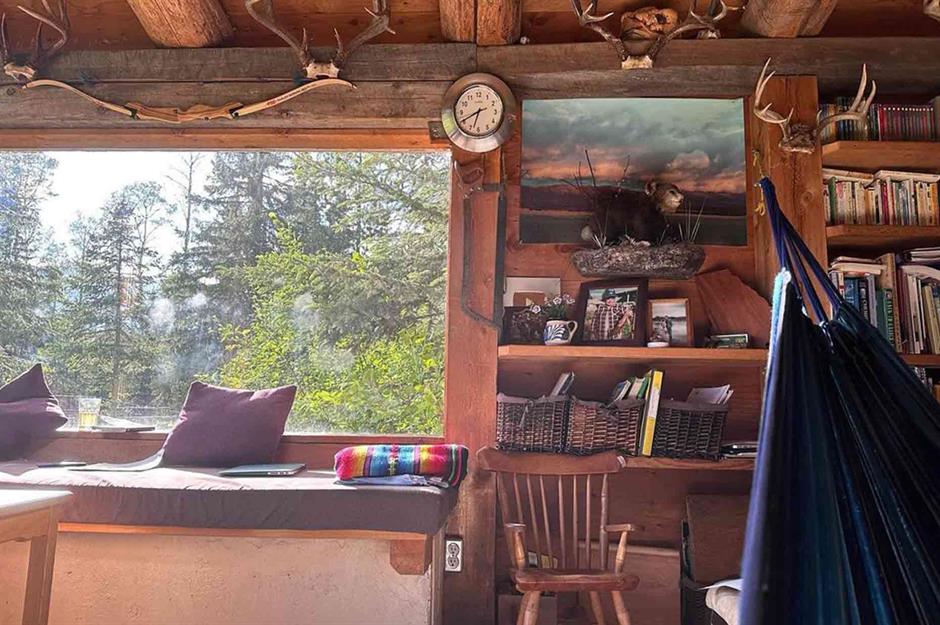
Inside, the bespoke home is steeped in character. The main living space is pared back yet welcoming and cosy, with vast picture windows that draw the outside in.
While it may be rustic, the house has all the modern amenities you'd expect, from a washing machine and a toaster to outlets for phone chargers. The difference is that the family generates power from solar panels, meaning their emergency generator runs for less than 40 hours a year.
Gridlessness family home, British Columbia, Canada
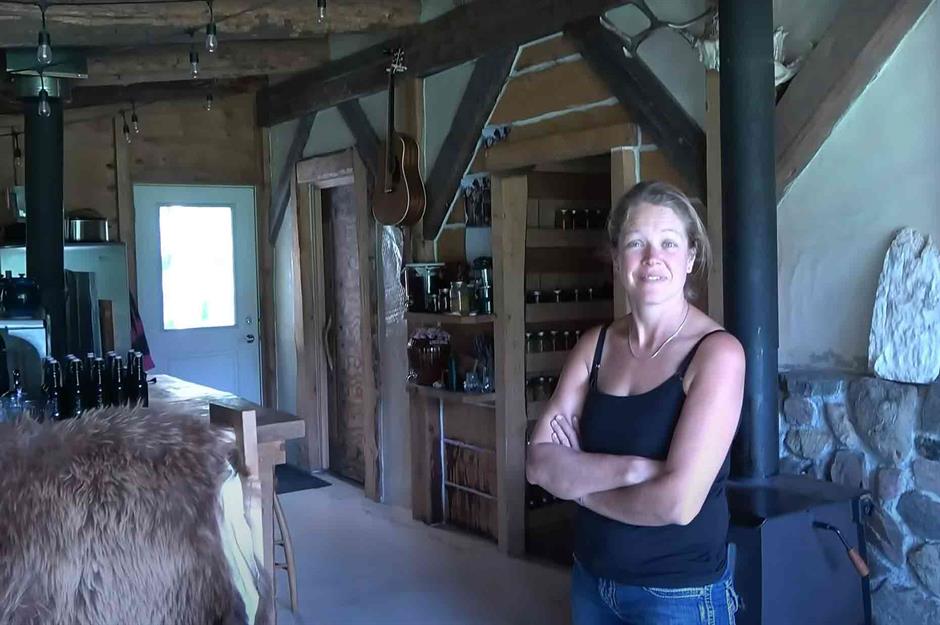
Jeff and Rose homeschool their daughters, so the dining table, pictured here on the far left, is where the family eat, socialise and also study.
There's no running water in the dwelling, so rainwater is collected and stored underground before being brought into the main house in buckets. It's filtered through a Berkey filtration system to make it suitable for drinking, or heated on the wood-burner for washing.
Without plumbing, the family uses eco-friendly compost toilets, which they sprinkle with sawdust after use.
Gridlessness family home, British Columbia, Canada

There are three bedrooms in the house, with a snug double bed for mum and dad and bunk rooms shared by some of their five daughters.
Impressively, two of the couple's daughters, Sarah and Abigail, built their own tiny house on the acreage where they now live. The girls milled all of the timberwork in the two-storey property, which includes a snug sleeping loft tucked away in the eaves.
Gridlessness family home, British Columbia, Canada

Keen to make the most of the great outdoors, in the summer of 2023, the family built their own beautiful outdoor kitchen. Complete with a suspended retractable roof, LED fairy lights and an old family pizza oven, the alfresco cooking station is the perfect place for summer gatherings beneath the tree canopy.
Sally’s round house, Yukon, Canada

This round little house in the snowy wilderness was built in Canada's Yukon Territory by pioneering homeowner Sally Wright. She had dreamed about living in a rustic house in a remote spot for years and finally realised her long-held ambition.
Sally made a short film to document the extensive construction process. Impressively, the film made its international debut at the Dawson City International Short Film Festival in 2013.
Sally’s round house, Yukon, Canada
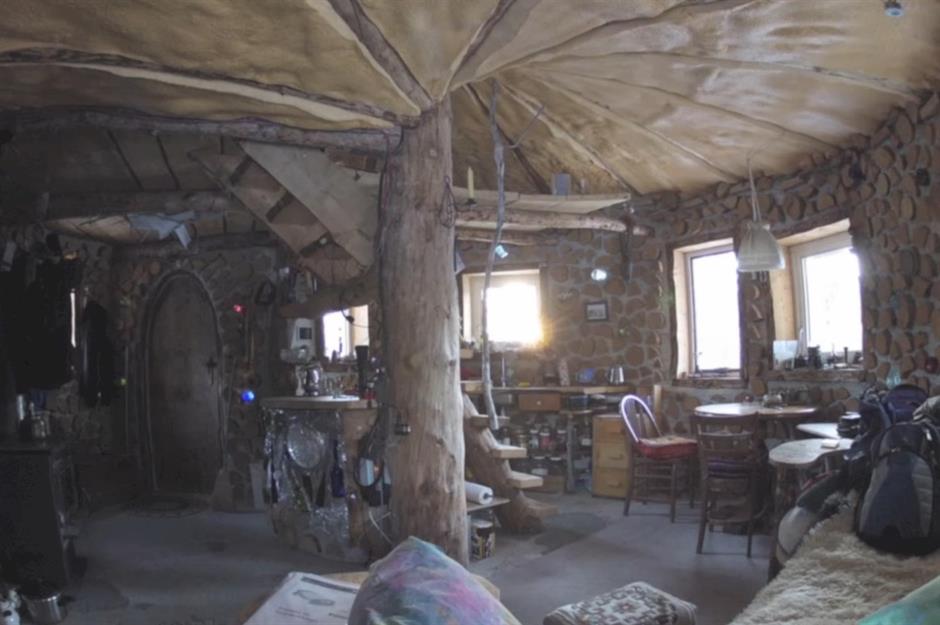
The property was built from white spruce wood but Sally was careful to ensure her use of the material was as sustainable as possible. Wood was only taken from trees that were already dead, due to the ravages of spruce bark beetles. What's more, all the trees selected for the project were harvested within a 500-foot radius of where the house sits.
Sally’s round house, Yukon, Canada

Recycled glass bottles embedded within the walls provide ingenious openings for daylight, as well as unique decorative focal points.
As the property is 37 miles away from civilisation and the electrical grid, the house is powered by solar energy. The array generates enough power to support the property's minimal electrical needs, including LED lights and laptop chargers.
Sally’s round house, Yukon, Canada
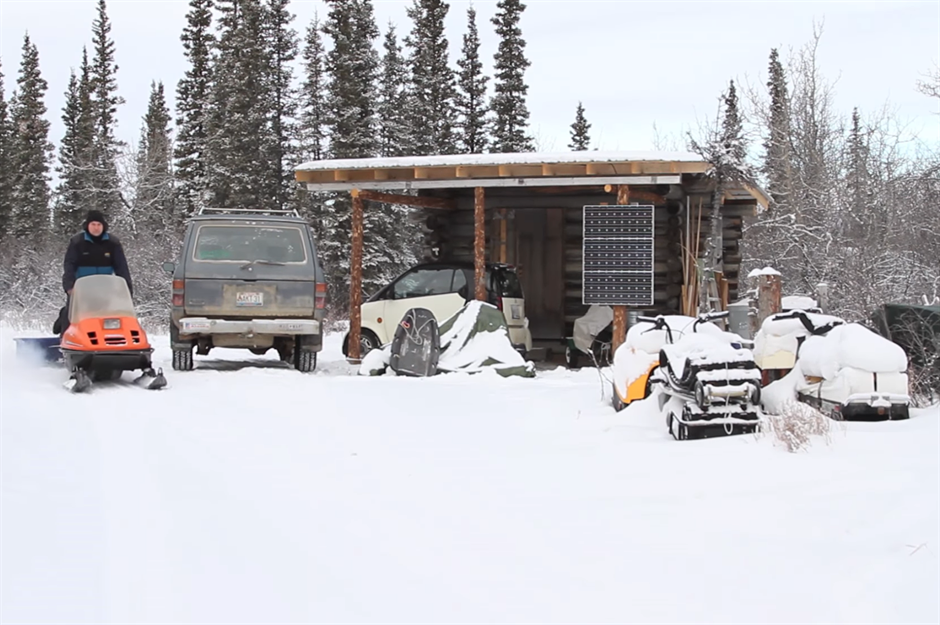
The secluded, woodland location of the house is picturesque but it also presents some logistical problems. At the time of filming the documentary, Sally shared that even an ordinary everyday task like buying groceries was complicated by her isolated locale. When she needed to stock up on food, Sally had to drive a shared truck to the nearest town, which is more than three hours away.
Sally’s round house, Yukon, Canada
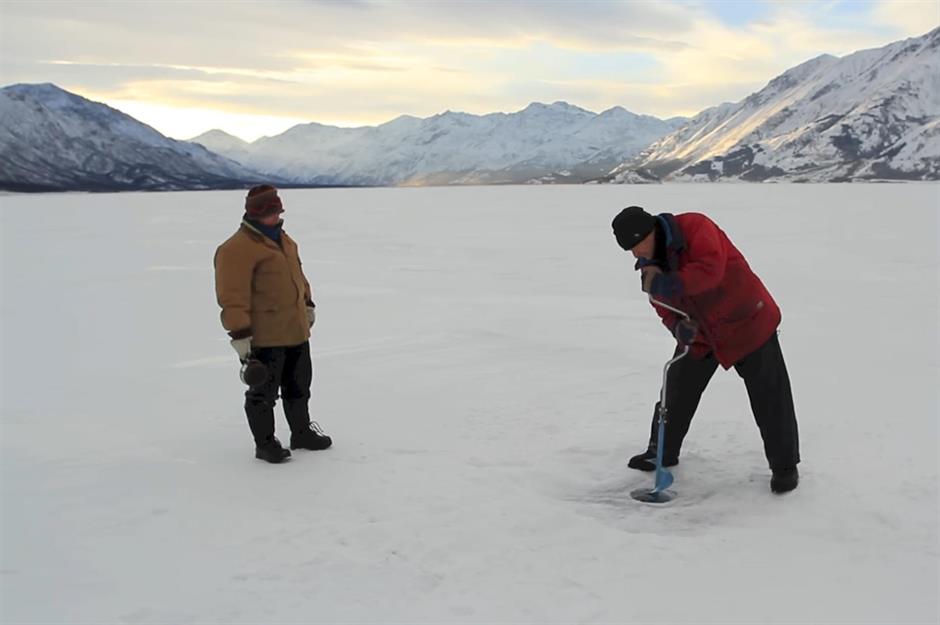
The house is heated using the same material it was built from. Sally chops wood from dead trees in the surrounding area to fuel her hearth and keep the home cosy and warm in the coldest months.
As shown here, Sally obtains water for the property by drilling down through the ice. Canisters are then filled up and transported back to the house.
Ariel’s tiny house, Wyoming, US
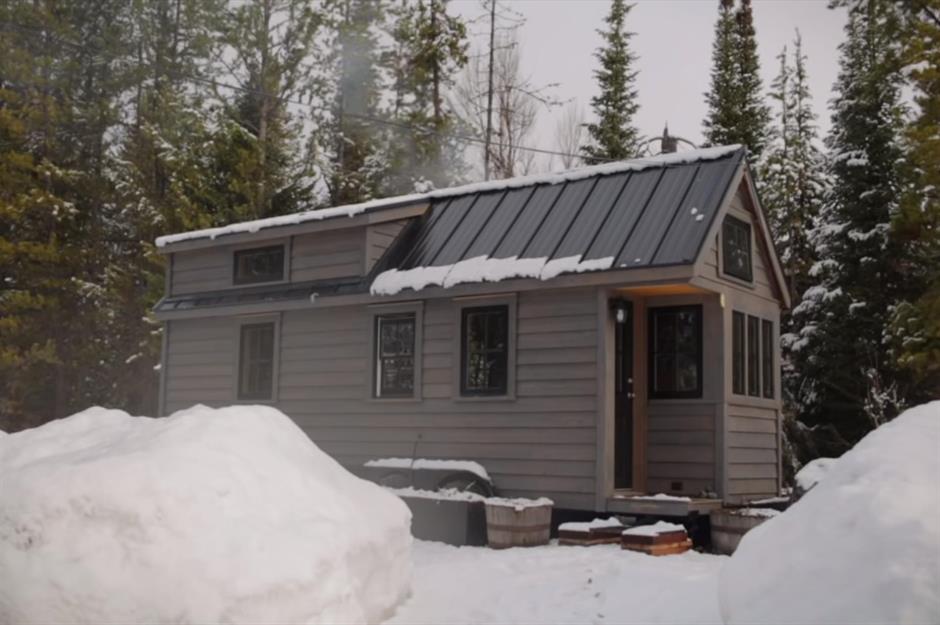
This miniature cabin on wheels belongs to Ariel McGlothin and is nestled way up in the Wyoming mountains. She shared her minimalist off-grid lifestyle in a video tour with filmmakers from Tiny House Expedition.
Ariel’s tiny house, Wyoming, US
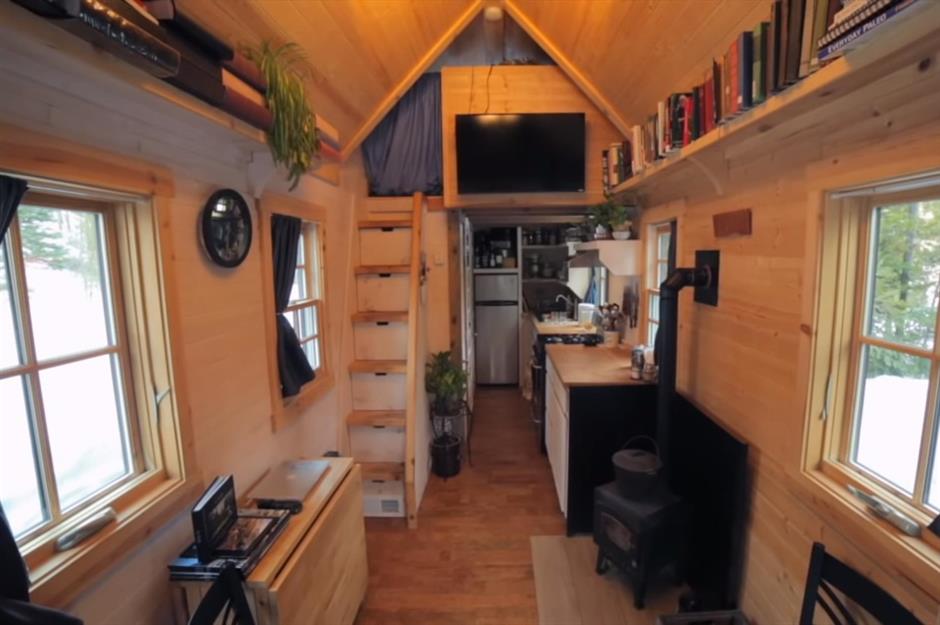
The cosy interior layout of the tiny home was cleverly designed to make the most of the small space. The snug kitchen features a bank of countertops for preparation and utilises an external propane gas tank for cooking.
The rest of the appliances run on electricity generated from solar energy, making the pocket-sized property relatively green to run.
Ariel’s tiny house, Wyoming, US
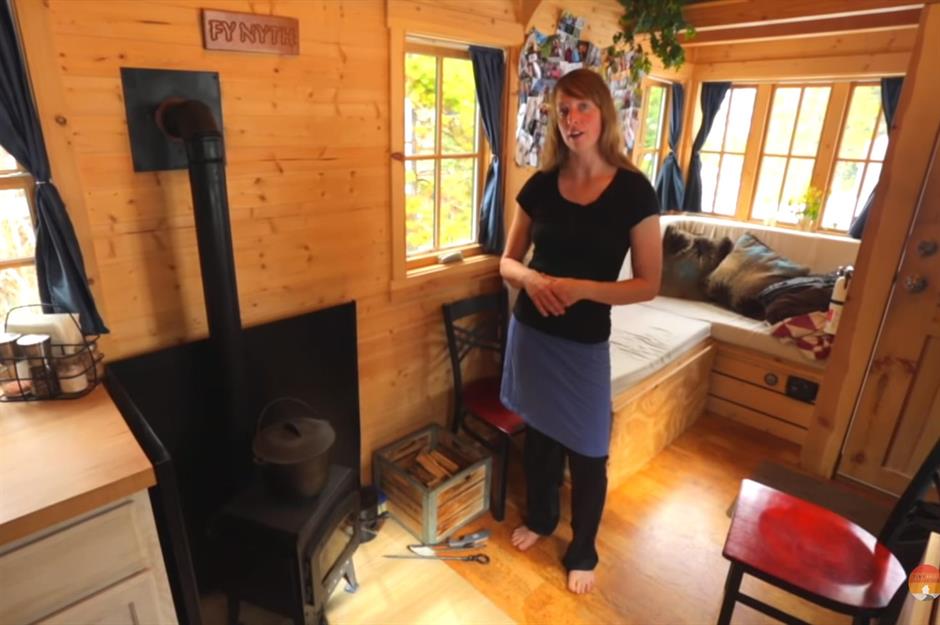
Every space in the tiny house works double-time. Ariel’s sitting area quickly transforms into a double guest bed – great for accommodating visitors.
Storage is plentiful and in addition to useful shelving tucked into the eaves, there's also extra space beneath the seating area. The dining table can even fold away when it’s not in use.
Ariel’s tiny house, Wyoming, US
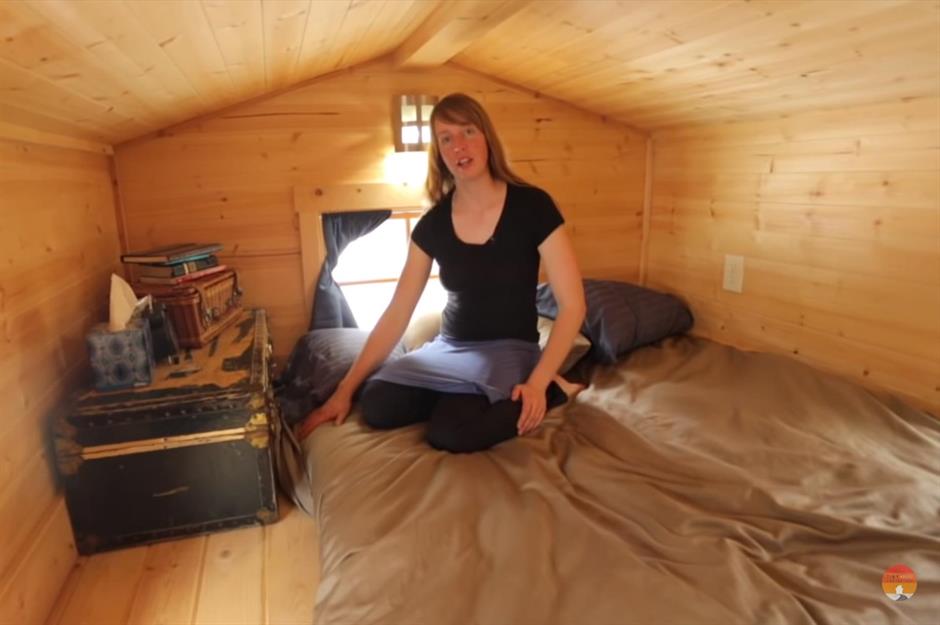
When the winter nights roll in, Ariel can climb up the stairs to her snug, loft-style bedroom. The sleeping space is surprisingly spacious and houses a double mattress and more storage cabinets at the foot of her bed.
Ariel’s tiny house, Wyoming, US
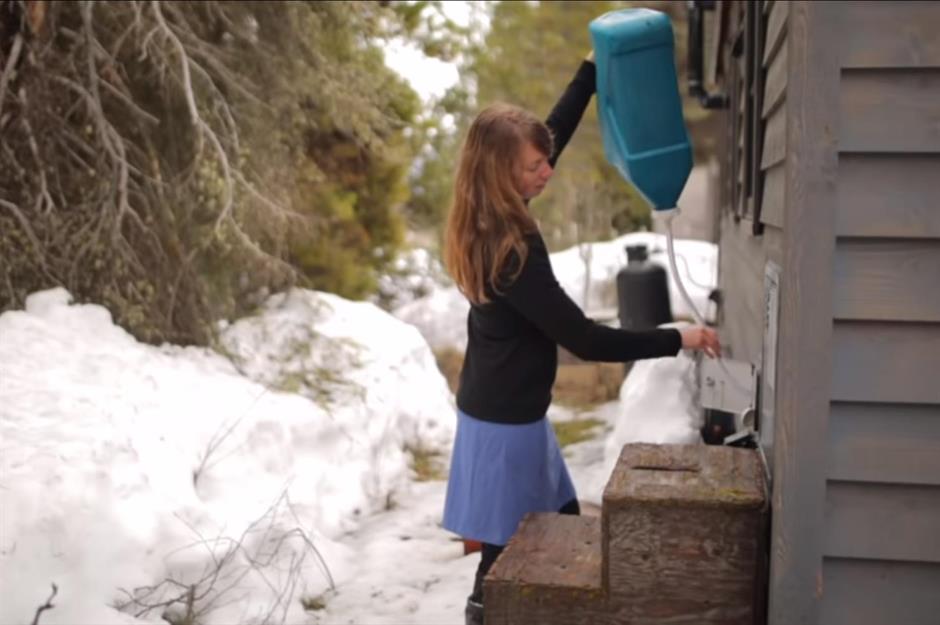
Keeping the home running day to day is no easy task. Ariel must continually shovel the snow from around the house to keep vents clear to allow propane fumes to escape.
To provide her home with running water, she has to fill up the service tanks from outside her house, where she also has a swing set and barbeque to enjoy in the warmer months.
Agafia’s hut, Siberia, Russia
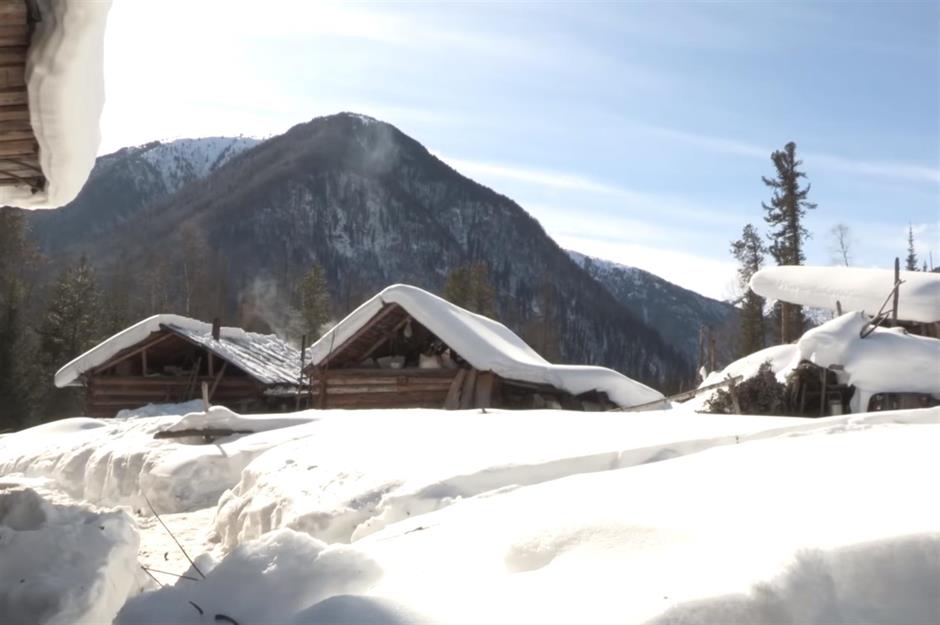
The Lykov family fled persecution in the 1930s and made their home deep in the Sayan mountains. Agafia Lykov was born in this secluded dwelling in Siberia, 160 miles away from the rest of civilisation.
For more than 70 years she called the property home and continued her traditional way of life there. She shared her story of living in the wilderness in a documentary for VICE back in 2014.
Agafia’s hut, Siberia, Russia
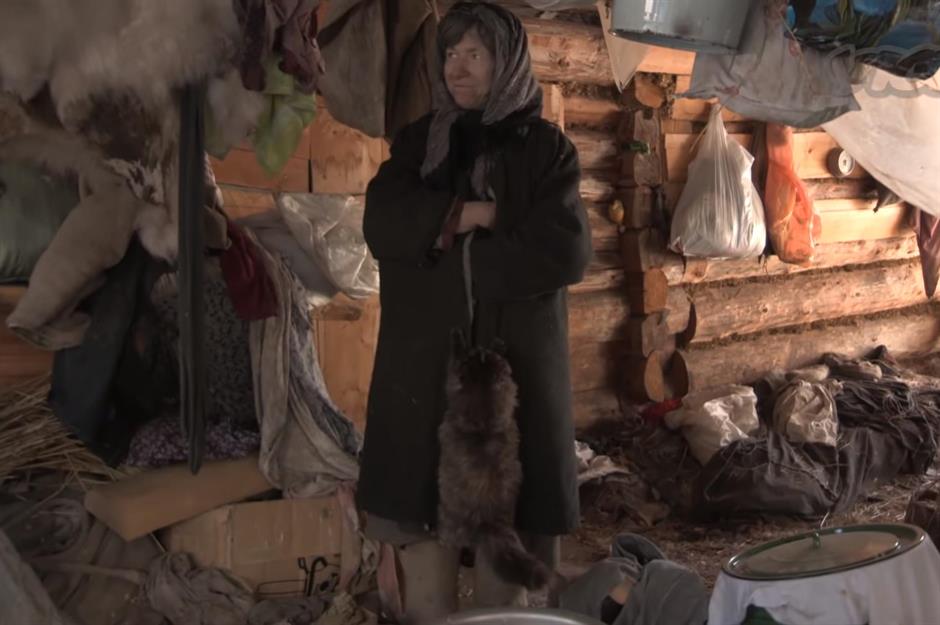
As captured here, Agafia’s home was pared back to the bare necessities, without running water or any modern electronics.
Day to day, Agafia told the filmmakers that she looked after livestock, foraged for food and went fishing. To ensure the home's fire was always stocked, she chopped wood and heaved it home. And to protect herself from approaching bears she made a makeshift drum that she beat to scare them away.
Agafia’s hut, Siberia, Russia
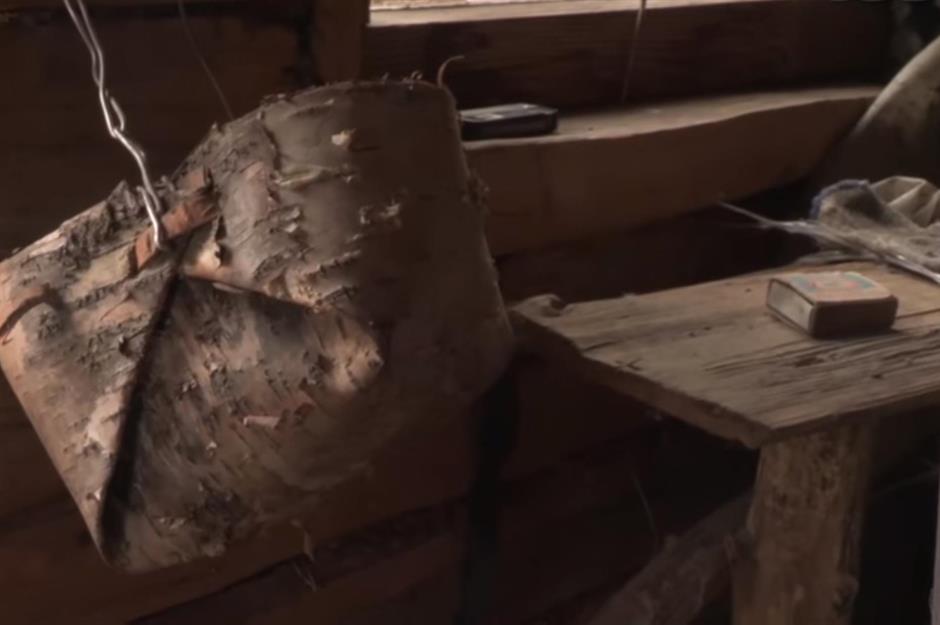
The hut's interior furnishings and possessions existed only for necessity. Agafia told VICE she would hate to move to a city. Although not an easy lifestyle, she said she'd rather stay in the mountains as she's well-equipped for her life here.
In fact, not even a visit from the Russian space agency in 2019 to inform her about an impending space launch that could cause debris to fall in her vicinity could persuade her to leave her isolated home.
Agafia’s hut, Siberia, Russia
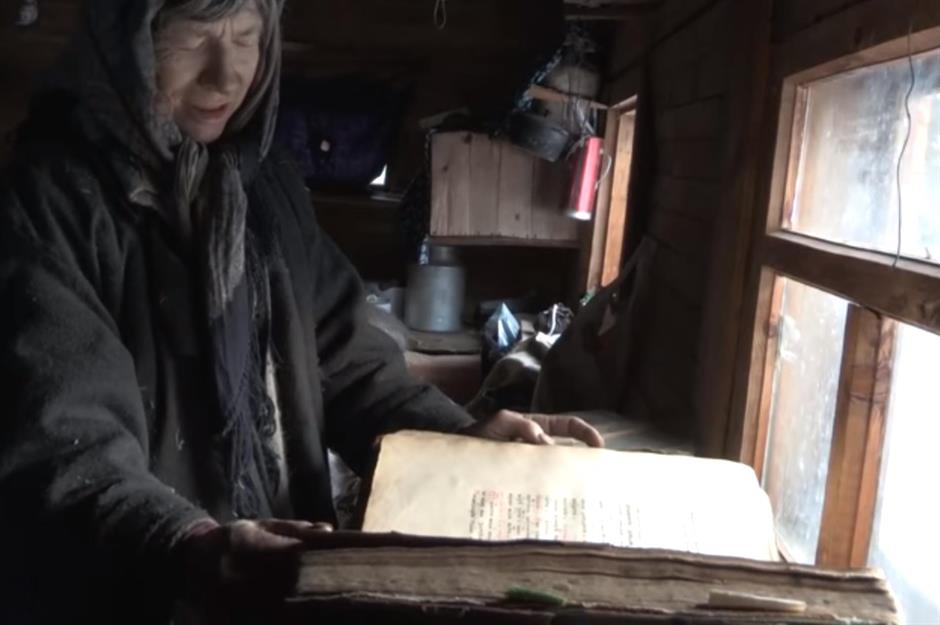
Devoutly religious, Agafia's sparse decorations in the hut included pieces of religious memorabilia and the 400-year-old holy book from which she prays.
Agafia shared her morning routine with the film crew: she rises before sunrise and comes to read prayers before she begins the day's chores.
Agafia’s hut, Siberia, Russia
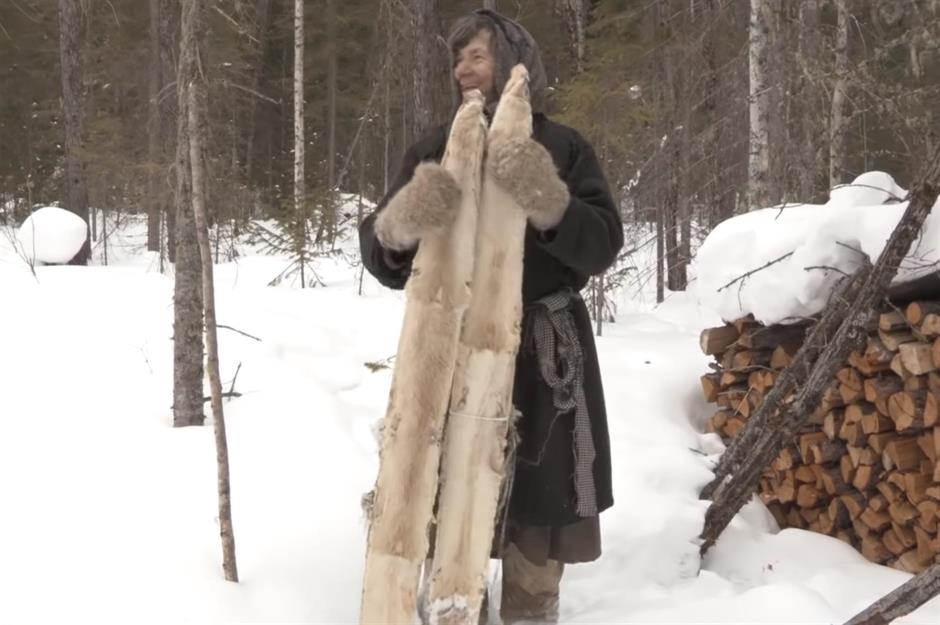
Without trucks, cars or any other form of modern transport, Agafia navigates the local terrain by foot. She showed the filmmakers the pair of clever homemade skis that enable her to traverse the rugged landscape to fetch wood, food and water.
Agafia finally said goodbye to her long-time home in 2021. During a welfare check, officials found the hut to be in a poor state of repair. Following a public appeal, Russian billionaire industrialist Oleg Deripaska funded the construction of a new cabin nearby. Given the remote mountain locale, the structure had to be built off-site and reassembled piece by piece.
According to The Siberian Times, Agafia still has a modest lifestyle in the single-storey wooden home, which features a small stove and a veranda.
Katskhi Pillar, Imereti, Georgia
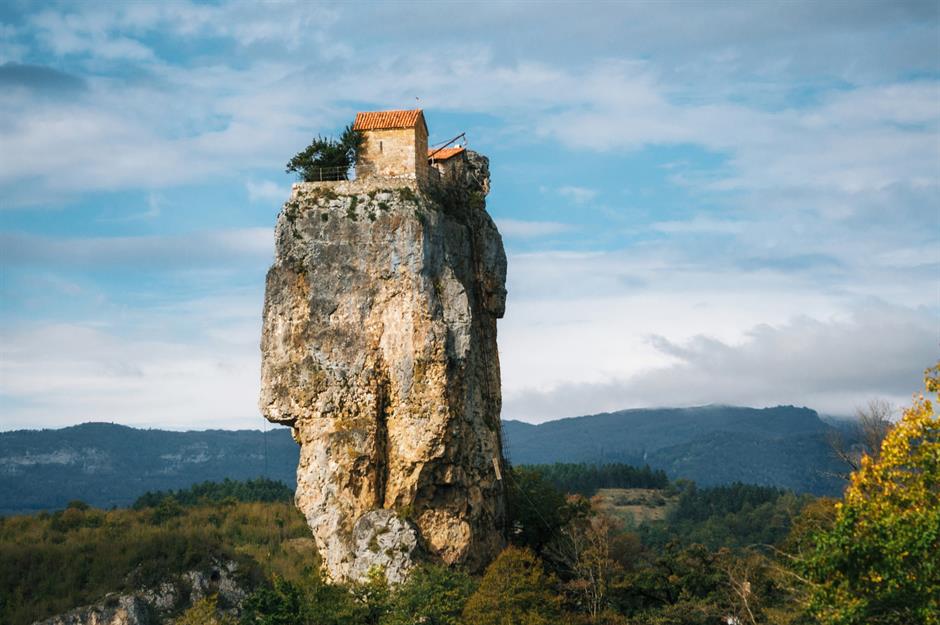
Nestled in the western Georgian region of Imereti, the Katskhi Pillar takes extreme living to new heights. Towering 130 feet, the stone column is home to a church built in the 6th to 8th centuries, a burial chamber and a cottage.
An iconic religious landmark in the area, the precarious spot has also housed one devout monk for over 20 years.
Katskhi Pillar, Imereti, Georgia
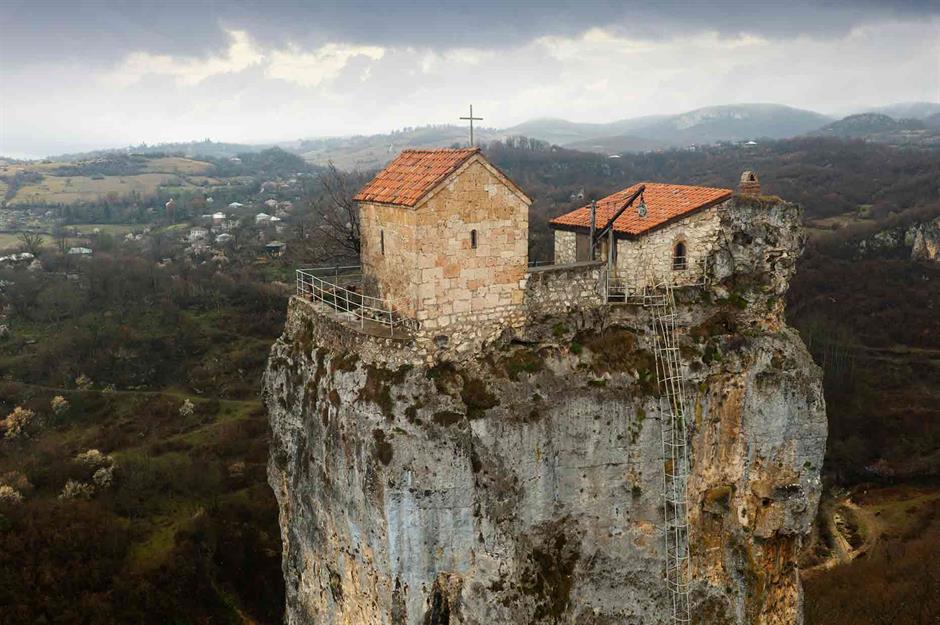
Father Maxime Qavtaradze was the column's sole resident, and the last monk to live on the column. Previously uninhabited since the 1400s, Maxime revived the religious tradition of the stylite – a spiritual person who lives on a remote pillar, enduring the elements to show their devotion to God.
The ladder back down to ground level takes 20 minutes to traverse, so during Maxime's tenure, supplies were winched up via a pulley system.
Katskhi Pillar, Imereti, Georgia
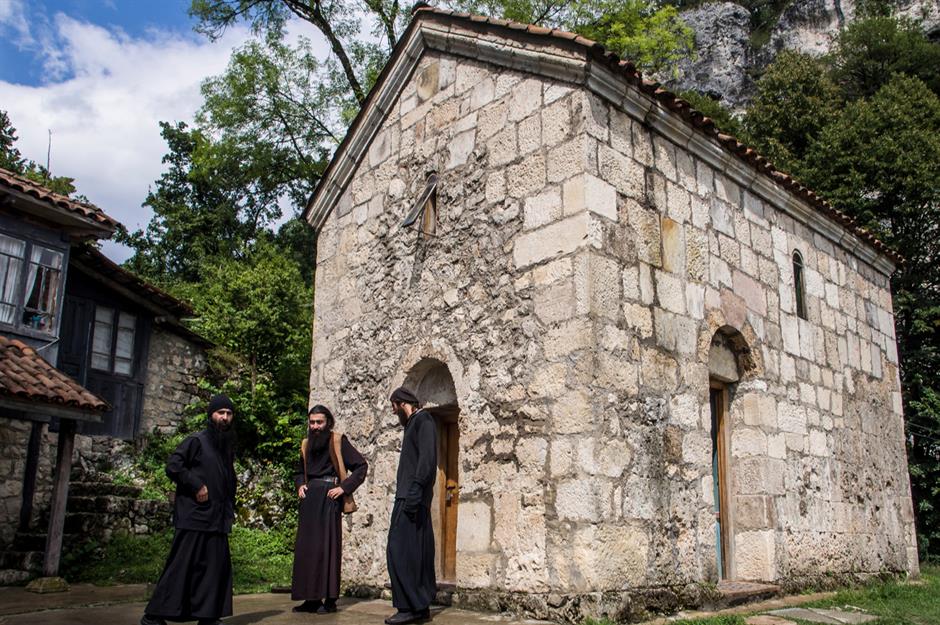
While the pillar is remote, it is not completely isolated. At the foot of the column lies a monastery where priests and troubled young men seek solace.
Maxime would travel down once or twice a week to offer guidance, having served time in prison himself in his youth before finding God, according to an interview given to photographer Amos Chapple in 2013.
Katskhi Pillar, Imereti, Georgia
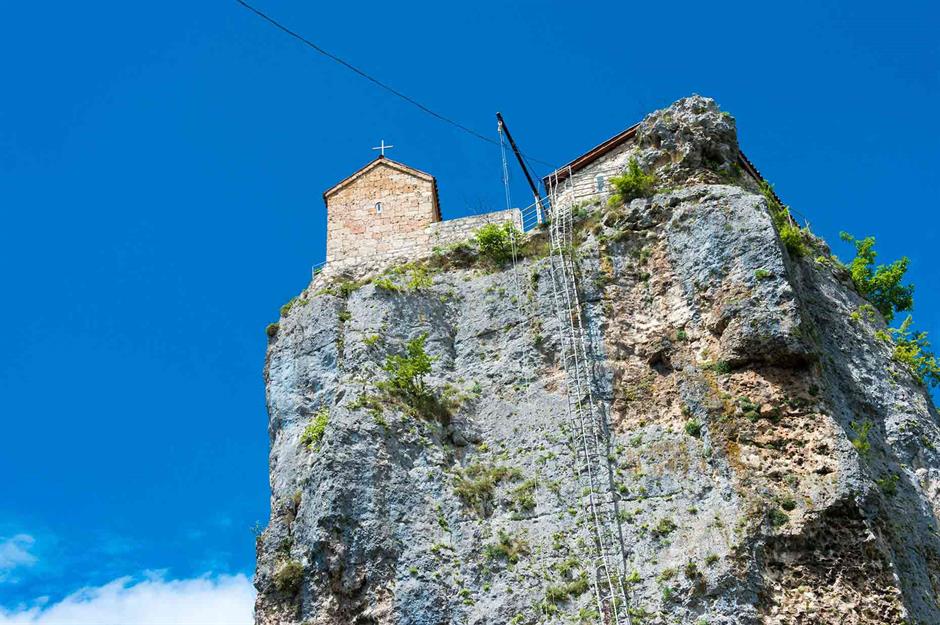
Each day, monks living in the complex below would make the vertical climb up the pillar to the church to say prayers. Pictured here, the journey wasn't for the faint of heart.
Accommodation at the top of the pillar was kept modest and pared-back as a sign of devotion – Maxime, along with priests and monastery guests, would've broken bread in a simple dining space with bare plaster walls.
Katskhi Pillar, Imereti, Georgia

For the first two years after he moved to his elevated home, Maxime slept inside a fridge to protect himself from the harsh conditions. Then, following the construction of a cottage, he had a humble space to call home.
Maxime also rebuilt the column's derelict church, restoring it to its former glory with bright religious tableaus and iconography during his time here. Talk about a head for heights!
Self-reliance cabin, Ontario, Canada
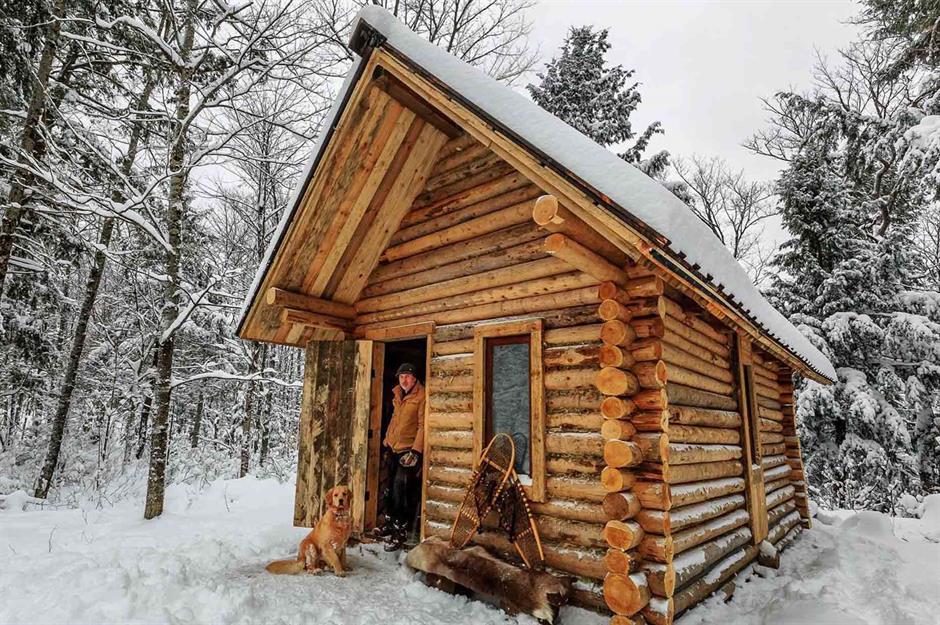
Hidden in the snowy Canadian wilderness lies a woodland cabin built by outdoorsman and self-reliance coach Shawn James. Shawn has since moved into another remote log-built home, but he lived in this isolated property with his dog for years.
While Shawn's wife and daughters spend time with him in the wilderness, he maintains a mostly secluded existence, foraging for wild food and relying on his well-honed survival skills. Shawn shares his way of life through his Instagram channel and website, My Self Reliance.
Self-reliance cabin, Ontario, Canada
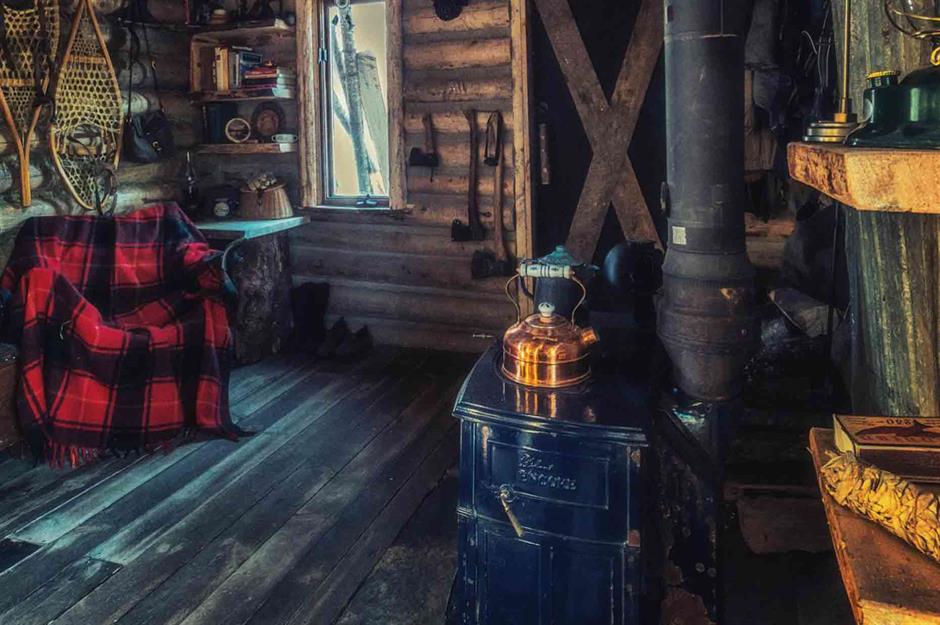
Inside, the log cabin was homely and warm, with exposed wood walls and floors. Shawn kept it toasty amid the snow with a wood-burning stove, which he also used for cooking.
Shawn built his snug dwelling by hand in 2017 using traditional construction techniques and equipment, without a modern power tool in sight. Impressive!
Self-reliance cabin, Ontario, Canada
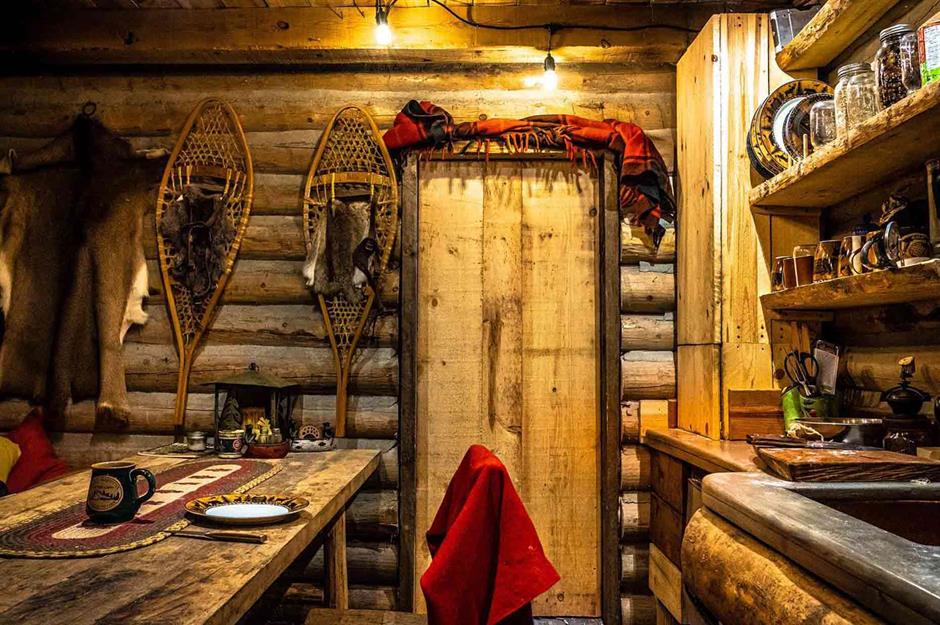
A sturdy, handmade table and chairs offered a comfortable dining space for Shawn and his family when they visited the cabin.
Most days, Shawn forages for food in the surrounding wilderness, fully embracing every aspect of his self-sufficient lifestyle. But for a sweet treat, he enjoys making pancakes with lashings of his homemade maple syrup.
Self-reliance cabin, Ontario, Canada
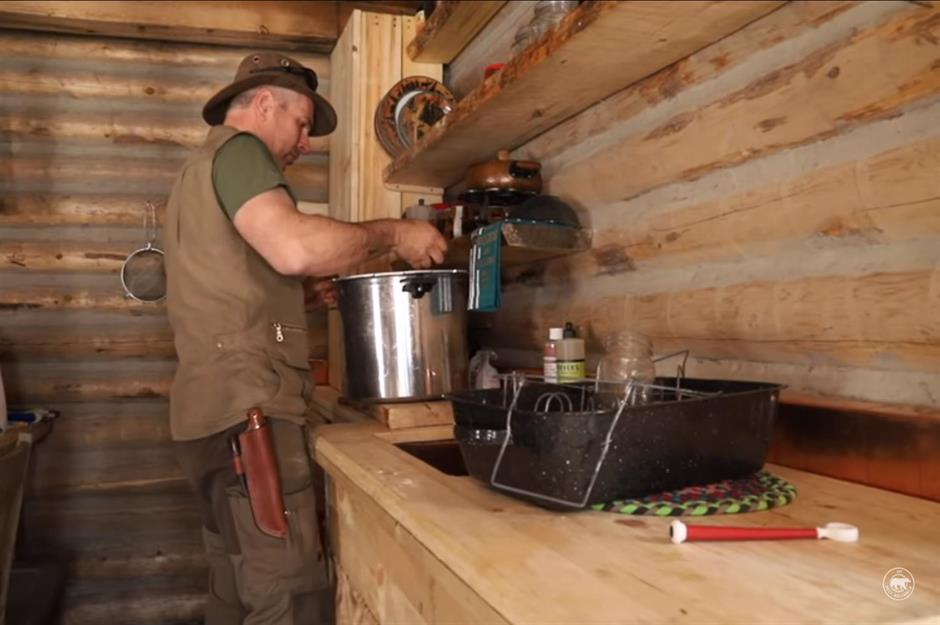
During his time in the cabin, Shawn harvested maple sap from the surrounding trees using metal 'spiles'. He has acquired a complex knowledge of the exact time and temperatures for the best harvest and says the sweet liquid can be drunk straight from the tree.
Pictured here in a video on his YouTube channel, he boils the sap down over an open fire to make his own maple syrup, which he then stores in jars.
Self-reliance cabin, Ontario, Canada
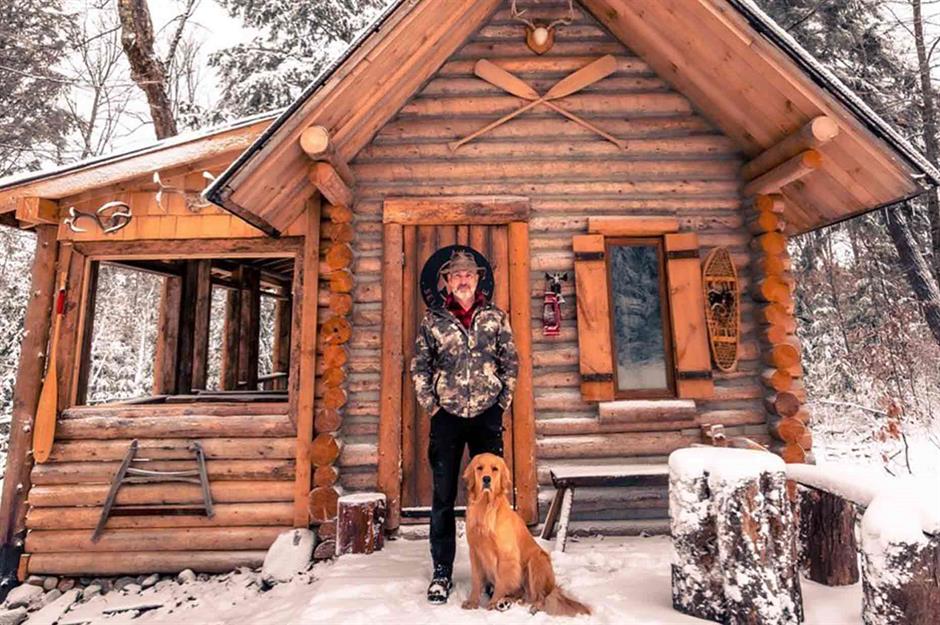
Living out in the woods may seem idyllic, but the realities of everyday life are no walk in the park. Chopping wood, building fires and searching for food are all part of a daily routine, no matter the weather.
Shawn has his furry pal, Cali, to keep him company in his snowy outdoor endeavours and she features regularly in his video updates.
Loved this? Discover more incredible off-grid homes
Comments
Be the first to comment
Do you want to comment on this article? You need to be signed in for this feature